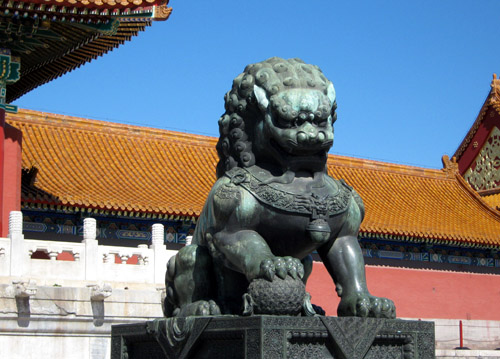Entering Forbidden City
 0 Comment(s)
0 Comment(s) Print
Print E-mail
Xinhua, October 17, 2011
E-mail
Xinhua, October 17, 2011

A FAMILY'S INDISSOLUBLE BOND WITH THE PALACE
The family of Liang Jinsheng, retired head of the cultural relics administration department of the Palace Museum, has experienced the entire process of how the Forbidden City became the Palace Museum.
Liang's great-great-grandfather, great-grandfather and grandfather were all imperial painters during the Qing After the Palace Museum was established, Liang's grandfather remained in the museum to protect relics left in the palace.
As the Japanese invaded northern China in early the 1930s, the government of the ROC transferred the Palace Museum's antiques to the south to avoid having them damaged in the war, setting the Liang family on a migration with the relics.
Liang Jinsheng and his siblings were born during the long journey with the roving antiques. Their names reflect their migrations. The eldest boy was born in Emei, Sichuan Province, and was named Liang Esheng. Then a girl was born in Leshan, which was called Jiading in ancient times, hence the girl's name, Liang Jiasheng.
Liang Jinsheng got his name because he was born in Nanjing, which was called Jinling in ancient times.
"In the chaos of war, such a large number of antiques were well protected. It's because the government valued them very much, and the staff of the Palace Museum fulfilled their duties diligently. The safety of the antiques was always their priority, although their wages were often in arrears," Liang said.
When the ROC government was defeated in China's civil war in 1949, Liang's grandfather was ordered to escort nearly 3,000 trunks of the most precious antiques to Taiwan, while Liang's father was ordered to stay in Nanjing to protect the remaining antiques.
At that time, Liang Jinsheng was only one year old. He has no memories of his grandfather who, it would later turn out, would never be reunited with his family.
Liang's father returned to Beijing in 1954, in charge of transferring the remaining antiques back to their original home, the Palace Museum.
"When I was a kid, I often went into the palace with my father. I liked to search for crickets under the bricks. The palace looked old at that time," Liang recalled.
After years of war, the palace was desolate, strewn with garbage and weeds. In the early 1950s, more than 250,000 cubic meters of trash was cleared out of the palace. The State Council placed the Palace Museum under key protection in 1961. It became a UNESCO World Heritage Site in 1987.
Liang Jinsheng followed in the footsteps of his father and grandfather and began working with relics in the Palace Museum in 1979. For the better part of the past three decades, Liang has been busy sorting, counting, and checking accounts and moving antiques.
In January 2011, the Palace Museum announced that the museum houses a total of 1,807,558 pieces of cultural relic. This was the first time in the museum's history that an accurate account of its collection was revealed.
It took more than seven years for the museum to thoroughly inspect and catalogue its vast collection-a process that left a deep impression on Liang. Although he hasn't seen all of the antiques housed in the museum, he said he has probably seen more than anyone else.
Among the 1.8 million antiques, about 10,000 can be shown in various domestic and overseas exhibitions very year.
"We've made efforts to display as many pieces as possible. But, because the ancient buildings of the palace are not suitable for exhibition, and many antiques are repetitious, most of them are preserved in storerooms," Liang said.






Go to Forum >>0 Comment(s)